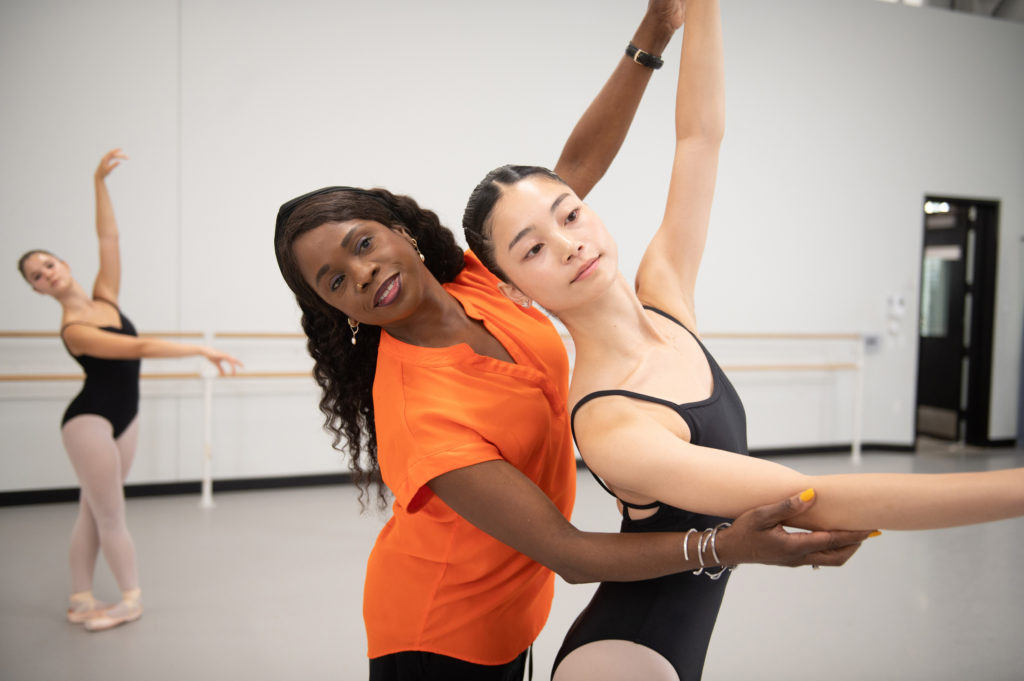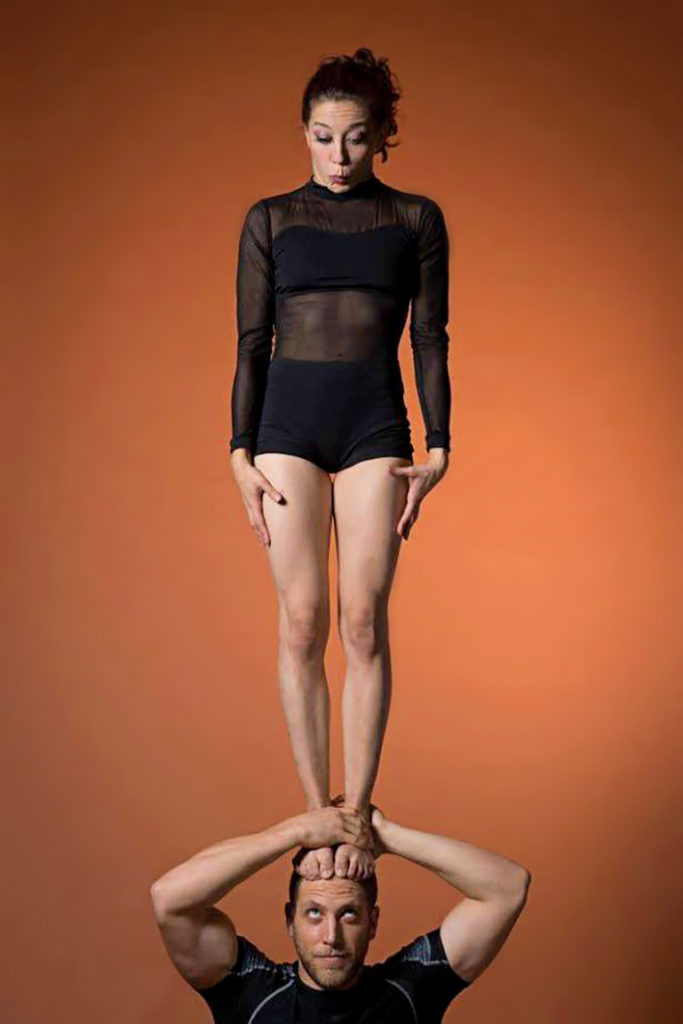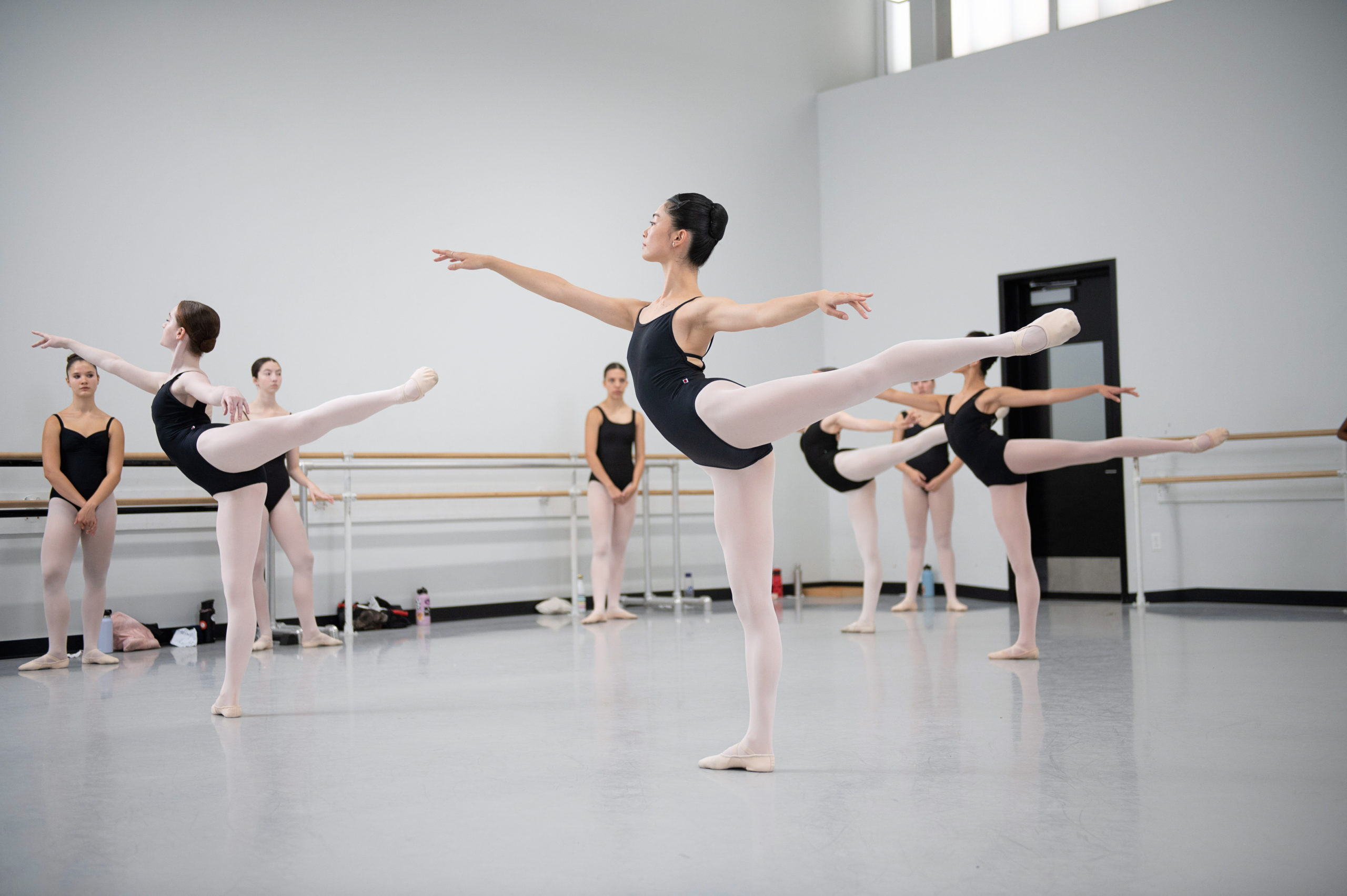Balance Longer With These Expert Tips
Dancers who can balance forever—whether on pointe, on a partner’s shoulders or in impossibly challenging positions—can seem like magicians, effortlessly mocking the laws of physics. Though balancing comes easier to some dancers than others, the elements that make for long, strong balances are less mysterious than they may seem: “It comes down to your visual input, your vestibular [inner ear] input and your somatosensory input, or your proprioceptors,” says Dr. Emily Becker, a physical therapist who works with dancers at her practice in Jacksonville, Florida. Dancers with good balance have the ability to “put all those pieces together and make it work,” she says, and also have the necessary core, glute, hip and ankle strength. Improve on each of these elements—and learn to integrate them—with these tips from Becker and expert teachers.
Rely Less on the Visual
Anyone who has suddenly felt wobbly onstage or when turned away from the mirror can attest to the fact that being able to see yourself helps maintain balance. But relying too heavily on visual feedback means that the proprioceptors, especially the important ones in the ankles, don’t have to work as hard, and thus aren’t as strong, says Becker.
“Messing with the visual system” can help you learn to rely less on seeing yourself, says Becker. This could mean spending more time facing away from the mirror, or even closing your eyes during appropriate moments at barre or other times when it’s safe to do so.

Avoid Gripping and Stiffness

When you feel yourself starting to fall off balance, it’s only natural to want to hang on for dear life. But gripping or stiffening up is usually counter-effective. “If you’re rigid, if there’s no breath within it, you can easily knock that over,” says Angela Buccinni Butch, a former dancer and the founder and artistic director of ABCirque and the circus school The Muse Brooklyn, where she teaches acro-balance and partner acrobatics. “There has to be a sense of rootedness, where you’re actually giving your weight to your partner or the ground. Because if you’re fighting the ground, the ground is always going to win.”
Becker often sees dancers grip the tibialis anterior tendon on the top of the foot during balances. “That takes our hips out of the equation, and we have to rely more on the foot and the ankle,” she says. “We get into these patterns that aren’t as stable as if we use those big muscles up at the hip.” If you notice yourself recruiting that tendon during balances (“If you can see it, you’re in trouble,” Becker says), focus on engaging and strengthening the glutes, and relaxing the toes into the floor.
Stiff balances also often miss the aesthetic mark, and lack the sense of freedom that makes watching someone balance so exciting. Andrea Long, the principal of upper-middle school programs at the School of Philadelphia Ballet, says if hanging on to a balance means lifting the shoulders or gripping, it’s time to “let that balance go, because it’s not going to come—it’s not coming from the right place.” Just because you’re balancing, doesn’t mean you stop dancing, she says. Your balances should be “alive.”
6 Exercises to Try
Incorporate these exercises from physical therapist Dr. Emily Becker to build strength and train your visual, vestibular and somatosensory systems for better balances. “Focus on a different thing every day so that it stays interesting and your body doesn’t adapt too quickly,” she suggests.
- Fondu with eyes closing: Without holding on to a barre, complete a fondu to the front (either on relevé or flat). When you return to a coupé plié position, look up, then look down, then, with the head in a neutral position, close the eyes, then open them. Repeat 8–10 times, then switch sides.
- Jumping arabesques with vestibular challenge: Beginning in a parallel position facing forward, jump to face the right side of the room, landing in plié and with the left foot in a parallel coupé. Extend the left leg and arm into a second arabesque. From there, look up, then down, then right, then left. Continue by jumping to face the back of the room with the opposite leg in coupé and repeating the exercise. Continue to rotate and switch sides, for 10–15 reps or until fatigued.
- One-legged weighted-arm circles: Standing on one leg in a parallel plié, hold a weighted ball above your head with the arms straight. Move the ball forward and backwards, side to side, and then in a circle. Continue moving for 15–30 seconds or until fatigued, then switch sides. To make it more difficult, look up at the ball. (Becker particularly recommends this one for dancers who lift their partners.)
- Standing bird-dog: Beginning in a turned-in first arabesque with the standing leg in plié, bring the elbow and knee in towards the torso to meet one another, then extend back out. Repeat 10–15 times or until fatigued, then switch sides.
- Standing C-curve: Stand with one leg in a parallel coupé, the other leg parallel and bent, and the arms overhead. Extend the working leg to the side while bending at the waist to reach the arms towards the leg (forming a “C”), then return to the starting position. Repeat 10–15 times or until fatigued, then switch sides.
- Rotating skaters: Beginning in a parallel coupé plié, jump laterally towards the working leg while rotating 90 degrees. Continue jumping back and forth between the two legs while rotating to each side of the room. Repeat 10–15 times or until fatigued.




